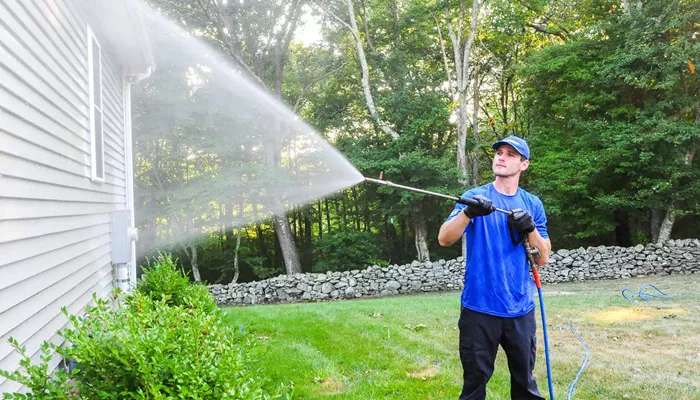Power washers are essential tools for cleaning various surfaces, but many people wonder if they require a hose connection to operate effectively. This article delves into the necessity of connecting a power washer to a hose and explores alternative water sources that can be used.
Understanding Power Washers
A power washer, also known as a pressure washer, is a device that uses high-pressure water to remove dirt, grime, and other contaminants from surfaces. These machines are commonly used for cleaning driveways, patios, vehicles, and buildings. The effectiveness of a power washer largely depends on the pressure (measured in PSI) and the flow rate (measured in GPM) of the water it uses.
How Do Power Washers Work?
Power washers operate by drawing water from a connected source, pressurizing it, and then expelling it through a nozzle at high velocity. This high-pressure water stream is effective in dislodging dirt and debris from surfaces. The water source is typically connected via a hose to the power washer’s inlet.
Do Power Washers Require a Hose?
Traditionally, power washers are connected to a water supply using a hose. This connection provides a continuous flow of water necessary for the machine’s operation. However, there are alternative methods to supply water to a power washer without using a traditional hose connection.
Alternative Water Sources for Power Washers
Using a Bucket or Barrel
One alternative is to use a bucket or barrel filled with water. A suction hose can be placed into the water container, allowing the power washer to draw water directly from it. This method is particularly useful in areas where a direct hose connection is not available. However, it’s important to note that the water supply from a bucket or barrel is limited, and frequent refilling may be necessary during extended cleaning sessions.
Built-in Water Tanks
Some modern power washers come equipped with built-in water tanks. These machines have an integrated reservoir that stores water, eliminating the need for an external water source. Such units are especially convenient for portable cleaning tasks, as they offer mobility and ease of use without the constraints of hose connections.
Using Natural Water Sources
In certain situations, power washers can be connected to natural water sources, such as streams or ponds. This setup requires a suction hose to draw water from the natural source into the power washer. While this method can be effective, it’s essential to ensure that the water is relatively clean to prevent damage to the machine’s pump and to avoid clogging the system with debris.
Considerations When Using Alternative Water Sources
Water Quality
Regardless of the water source, the quality of the water is crucial. Contaminants like dirt, leaves, or algae can clog the power washer’s pump and hoses, leading to reduced performance or potential damage. It’s advisable to filter the water before it enters the machine to maintain optimal functionality.
Water Pressure
Power washers rely on a consistent and adequate water supply to generate the necessary pressure for cleaning. Water sources with low pressure may not provide sufficient flow, leading to decreased cleaning efficiency. It’s important to ensure that the chosen water source can deliver an adequate flow rate to meet the power washer’s requirements.
Portability and Storage
When opting for alternative water sources, consider the portability and storage of the water supply. Carrying large containers of water can be cumbersome, and refilling them can interrupt cleaning tasks. Built-in water tanks offer a more convenient solution but may limit the amount of water available for extended cleaning sessions.
Advantages of Using Alternative Water Sources
Increased Mobility
Using a power washer with a built-in water tank or connecting it to a portable water source allows for greater mobility. This is particularly beneficial for cleaning tasks in areas without easy access to a water supply, such as remote locations or during outdoor events.
Convenience
Having an integrated water source eliminates the need to set up hoses, making the cleaning process more straightforward and less time-consuming. This convenience is especially appreciated during quick cleaning tasks or when dealing with tight spaces.
Cost-Effectiveness
In some cases, using alternative water sources can be more cost-effective. For instance, utilizing rainwater collected in barrels can reduce water bills and promote environmental sustainability by reusing water that would otherwise go to waste.
Disadvantages of Using Alternative Water Sources
Limited Water Supply
Alternative water sources, such as buckets or barrels, have a finite amount of water. Once the supply is exhausted, cleaning tasks must be paused to refill the container. This limitation can be a significant drawback for extensive cleaning projects.
Potential for Reduced Pressure
Water sources without pressurized systems may not provide the necessary flow rate for optimal power washer performance. This can result in reduced cleaning efficiency and may require adjustments to the machine’s settings or the use of different nozzles.
Maintenance Challenges
Using non-traditional water sources may require additional maintenance to ensure the power washer operates effectively. This includes regular cleaning of filters and hoses to prevent clogs and ensuring that the water source remains free from contaminants.
Conclusion
While traditional power washers are typically connected to a water supply via a hose, alternative water sources can be used effectively with proper setup and precautions. Whether using a bucket, built-in tank, or natural water source, it’s essential to consider factors like water quality, pressure, and supply limitations to ensure optimal performance. By understanding these considerations, users can choose the most suitable water source for their power washer, enhancing cleaning efficiency and convenience.
Related topics:
- How Much Can You Make from Pressure Washing?
- How Long Does Power Washing Last?
- How Much Should I Charge Per Hour for Pressure Washing?

